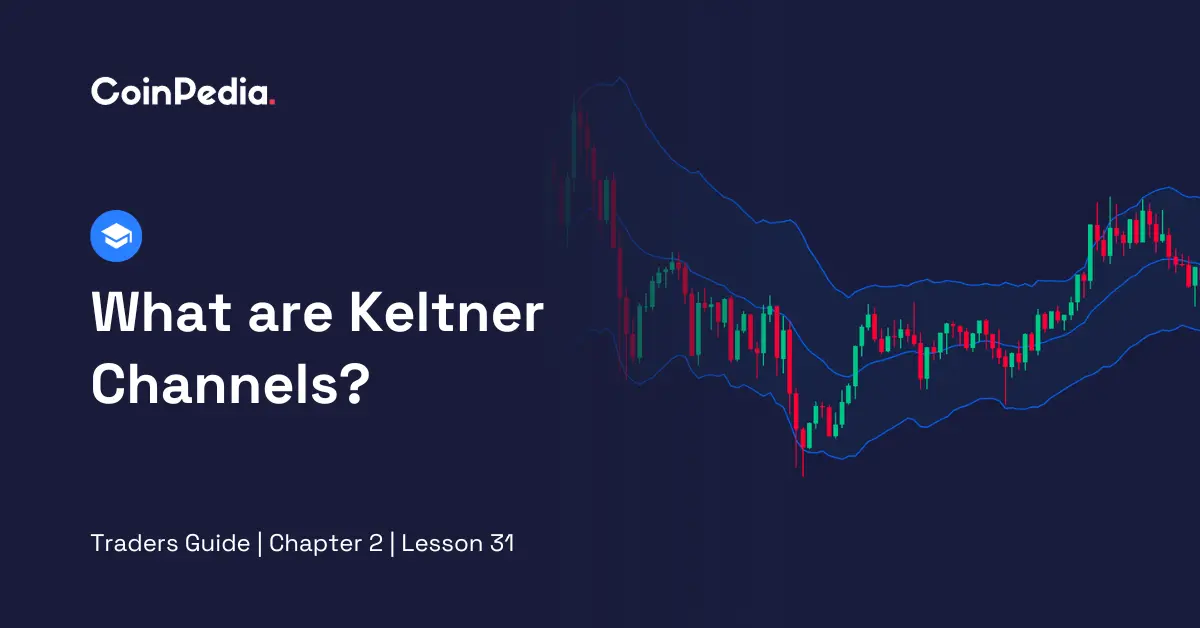
One method of creating advanced indicators is to discover the right combinations from the existing indicators. A combination of two or three simple indicators may create a powerful, advanced indicator. The Keltner Channel, based on Exponential Moving Average and Average True Range, is a prime example of such an innovation. Are you interested in learning about this indicator? Let’s discuss the basics of Keltner Channels!
1. Keltner Channels: The Basics
Keltner Channels, similar to Bollinger Bands, are blue channels that show the average price of an asset over a period. These channels help us see if the price is moving in a trend or just staying flat.
2. Keltner Channels: The Origin
Chester Keltner, a US grain trader, introduced the Keltner Channel indicator in the 1960s for commodities. It later expanded to stock, forex, and cryptocurrency markets.
Linda Bradford Raschke reformed it in the 1980s, switching from the Simple Moving Average to the Exponential Moving Average for more responsiveness.
3. Keltner Channels: The Basic Working
The Keltner Channel indicator surrounds price movements with three lines. The middle line represents the average price trend. The upper and lower lines act as flexible boundaries, adjusting based on recent price changes and volatility.
4. Keltner Channels: The Simple Calculation
The Keltner Channel indicator formula relies on two external indicators: EMA and ATR. These indicators are combined to create three different calculations for the middle, upper and lower envelopes of Keltner Channel.
| Middle Envelope: EMA (Exponential Moving Average |
The Middle line is calculated using the EMA, which shows the average price over time.
| Upper Envelope: EMA + (ATR * User-Defined Multiplier) |
To find the upper line, you add the product of the ATR and a factor chosen by the user to the EMA.
| Lower Envelope: EMA – (ATR * User-Defined Multiplier) |
The lower line is calculated by subtracting the product of ATR and user-defined factor from the EMA.
5. Launching Keltner Channel on a TradingView Chart: Step-by-Step
Here are the steps to launch the Keltner Channel on a TradingView Chart:
- Sign in to TradingView
- Open a chart of the asset you want to analyse
- Click on ‘Indicators’ at the top of the chart
- Type ‘Keltner Channel’ in the search bar
- Click on it to add it to your chart
- Adjust the settings if indeed, like the period or colours
- Use the Keltner Channel to analyse price movements
6. Reading Keltner Channel: Simple Tips
The basic signals Keltner Channel provides are:
- Breakout Signal
When the price moves outside the channel, it signals a potential trend change.
- Overbought/Oversold
If the price touches the upper channel, it could be overbought; if it touches the lower channel, it may be oversold.
- Squeeze
When the channel narrows, it suggests low volatility, possibly leading to a big price move.
Endnote
Keltner Channels offer traders valuable insights into price trends. Developed by Chester Keltner for commodities, it later found use in various markets, with Linda Brandford Raschke enhancing it. The indicator helps traders identify trends and potential reversals by surrounding price movements with flexible boundaries. Calculated using Exponential Moving Averages and Average True Range, it is a versatile tool. By following simple steps, traders can easily apply it on TradingView for effective analysis and decision-making.
Well Done! You have now completed the Lesson.
Complete the Quiz and Get Certified! All The Best!
We'd Love to Hear Your Thoughts on This Article!
Was this writing helpful?
 Yes
Yes  No
No
Disclaimer and Risk Warning
The information provided in this content by Coinpedia Academy is for general knowledge and educational purpose only. It is not financial, professional or legal advice, and does not endorse any specific product or service. The organization is not responsible for any losses you may experience. And, Creators own the copyright for images and videos used. If you find any of the contents published inappropriate, please feel free to inform us.



